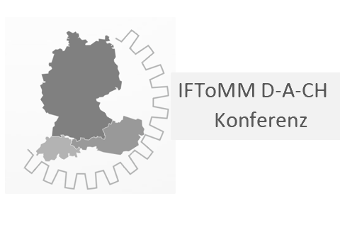Entwicklung repräsentativer Prüfzyklen für mobile Maschinen auf Grundlage realer Felddaten
Die Vermessung des realen Betriebsverhaltens von Verbrennungsmotoren findet auf Grundlage von standardisierten Prüfzyklen statt. Dabei werden unter anderem die ausgestoßenen Emissionen bilanziert und bewertet. Oftmals weichen die so ermittelten Kennwerte von denen im Realbetrieb der Fahrzeuge ab. Im Kontext von mobilen Maschinen erfolgt die Prüfung sowohl anhand standardisierter stationärer als auch dynamischer Prüfzyklen. Da die Gattung der mobilen Maschinen ein weites Gebiet an Fahrzeugen umfasst, wird im Zuge dieses Beitrages untersucht, ob und in wie weit das dynamische Alltagsverhalten von Hafenumschlaggeräten durch den dynamischen Standardzyklus Non-Road-Transient-Cycle (NRTC) abgebildet werden kann. Dazu wird eine Zyklusgenerierung mit zwei in der Wissenschaft etablierten Methoden auf Grundlage einer Datenbasis aus einem Feldversuch durchgeführt und der nach festgelegten Bewertungskriterien beste Zyklus ausgewählt. Dieser Zyklus wird im Anschluss dem NRTC gegenübergestellt, um anhand der Bewertungskriterien zu beurteilen, ob der NRTC die zugrundeliegende Datenbasis ausreichend repräsentiert.
The measurement of the real-world operating behaviour of combustion engines is based on standardized test cycles. Thereby, among other things, the exhaust emissions are recorded and evaluated. The characteristic values determined in this way often deviate from the values obtained in real vehicle operation. In the context of mobile machinery, testing is carried out using both standardised stationary and dynamic test cycles. Since the category of mobile machinery covers a wide range of vehicles, this paper examines whether and to what extent the dynamic everyday behaviour of port handling equipment can be represented by the dynamic standard cycle Non-Road-Transient-Cycle (NRTC). For this purpose, a cycle generation with two in science established methods is carried out on the basis of a database from a field test and the best cycle is selected according to defined evaluation criteria. This cycle is then compared to the NRTC in order to assess, based on the evaluation criteria, whether the NRTC sufficiently represents the underlying database.
Vorschau

IFToMM D-A-CH Konferenz
Zitieren
Zitierform:
Driesch, Patrick/Weißkopf, Torben/Schramm, Dieter (2020): Entwicklung repräsentativer Prüfzyklen für mobile Maschinen auf Grundlage realer Felddaten. In: Sechste IFToMM D-A-CH Konferenz 2020: 27./28. Februar 2020, Campus Technik Lienz. Online unter: https://nbn-resolving.org/urn:nbn:de:hbz:464-20200220-170633-4.
Zitierform konnte nicht geladen werden.
